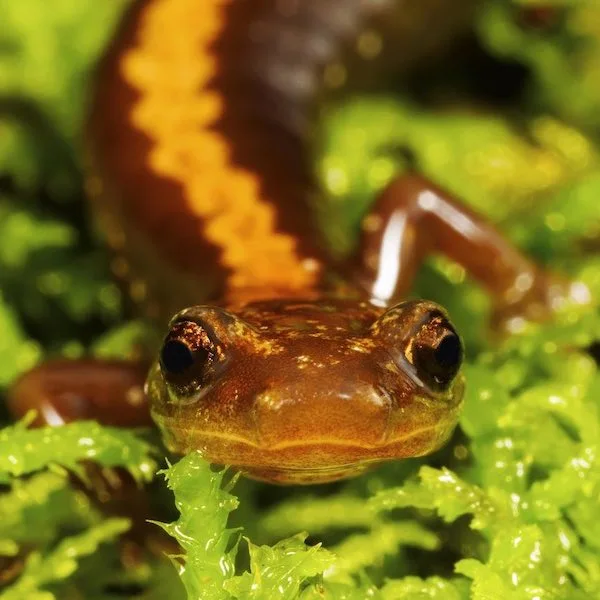Survivors under threat
The fossil record of amphibians, the group that includes frogs, salamanders, and caecilians, goes back over 350 million years. Yet, these long-term survivors now face the threat of extinction as a result of environmental disturbance, habitat loss, and climate change.
Amphibians are extremely sensitive to their environmental conditions and it is precisely this sensitivity that makes them so vulnerable. It has been estimated that one third or more of living amphibians are at risk of extinction.
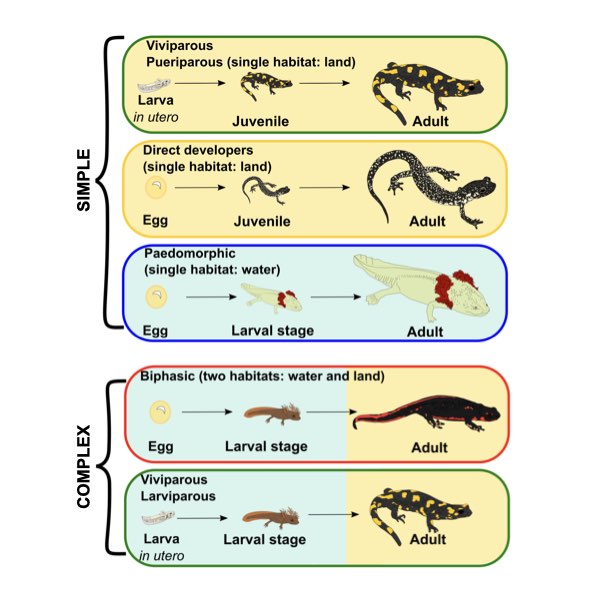
An advantage to complexity?
In their struggle for survival, some amphibians may have an advantage owing to their life cycle complexity. All amphibians start their life cycle as an egg. However, some pass through a larval stage before metamorphosing into an adult. And those with the most complex life cycles transform from aquatic larvae into terrestrial adults.
Species with complex life cycles have the genetic and developmental capacity to radically alter their anatomy and ecology during their lifetime. Could this capacity for change help these species adapt to a rapidly shifting environment?
Evolution’s laboratory
The Meta-Morphosis Project, started in 2022, is answering this question using an experiment that has played out over hundreds of millions of years: the evolution of salamanders. Salamanders are diverse in both life cycle complexity and number of species. By studying how salamanders have responded to environmental changes over evolutionary time, we can test whether salamanders with more complex life cycles have an advantage.
If a complex life cycle does confer an advantage, increases in life cycle complexity should be correlated with an increase in diversity. Conversely, decreases in life cycle complexity should be correlated with decrease in the number of new species over time.
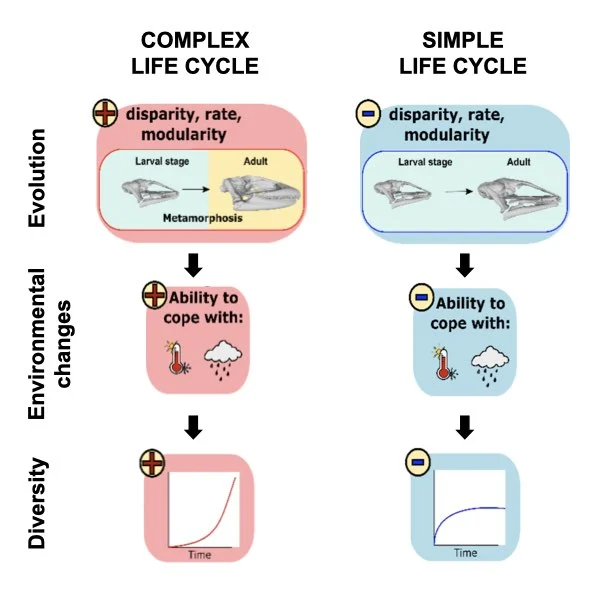
Project objectives
To test these hypotheses, the Meta-Morphosis project has five main objectives integrating multiple fields of biology.
We’re building a comprehensive and interconnected dataset on salamanders, including:
- Building a collection of over 2000 phenotypes reflecting the morphological diversity among species and over development within an individual.
- Building a functional data set for more than 70 species reflecting the diversity of feeding strategies at different life stages.
- Build a trait, conservation status, and environmental dataset.
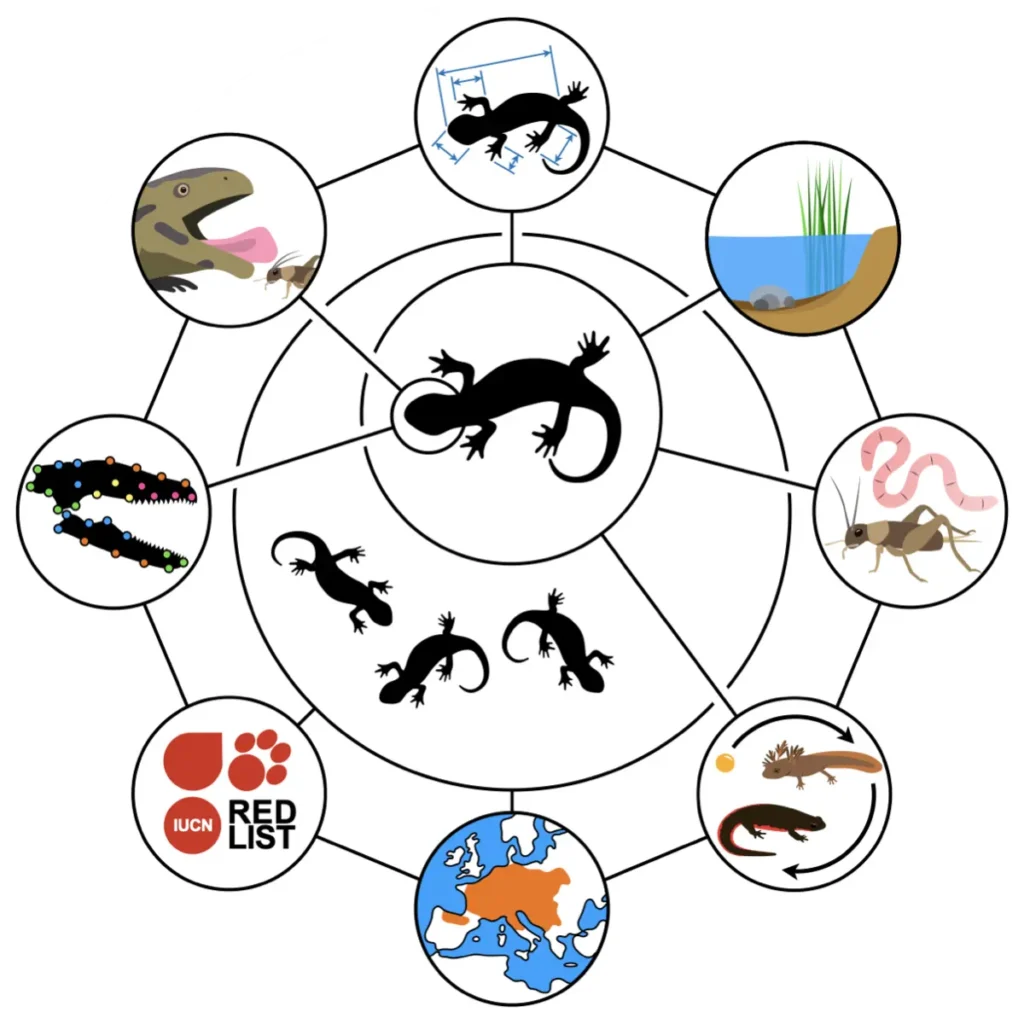
We’re establishing the patterns of form-function relationships among species throughout development, which includes:
- Testing whether and how larval stages overlap with adults in morphology and function.
- Using correlations between larval and adult stages across species to interpret form in a functional context.
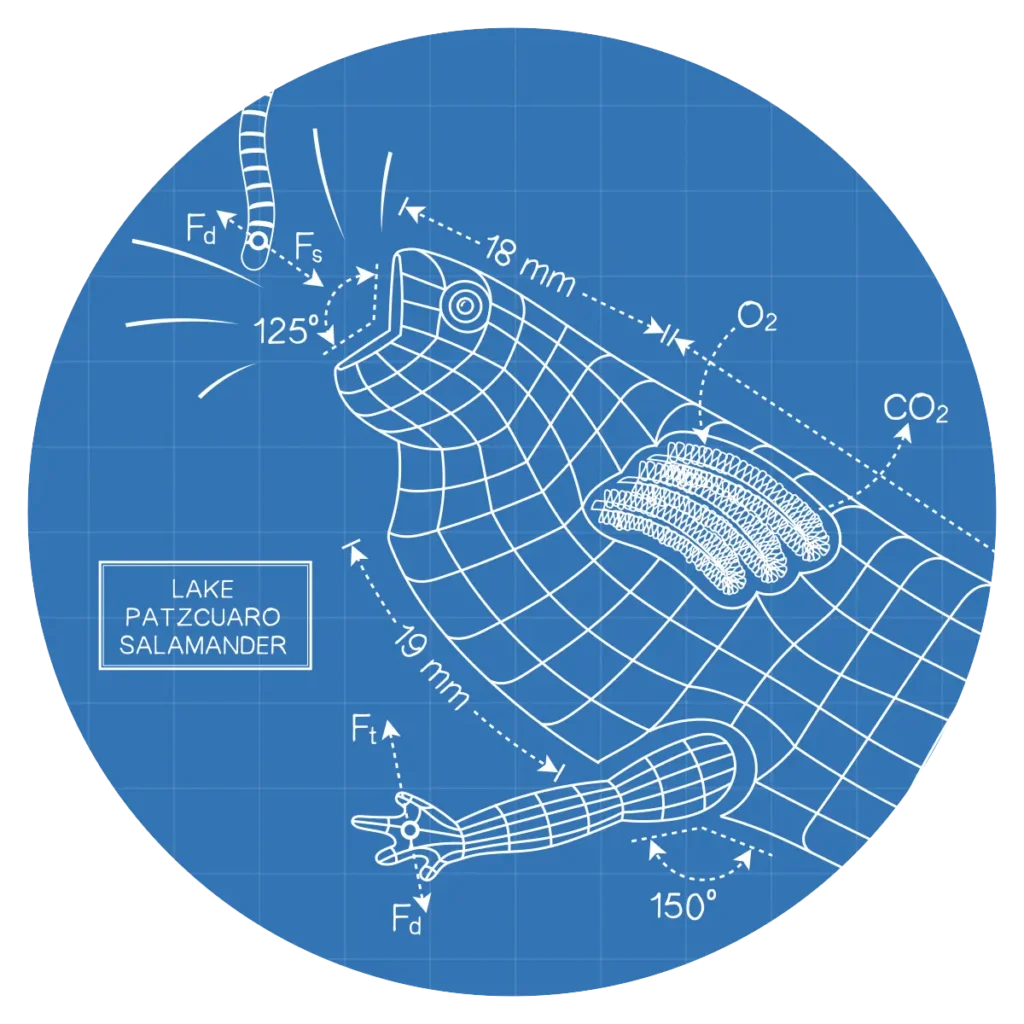
We’re assessing whether life cycle complexity allows salamanders to vary morphologically in response to environmental changes at the population level. For each population, we’re using fine-grained and spatially explicit data to assess:
- Variability under different environmental and climactic conditions for salamanders with different life cycle types.
- Modularity and evolvability (the extent to which different parts of the organism can vary, and thus evolve, independently of each other).

We’re assessing whether life cycle variation has fostered morpho-functional diversity through deep time, including:
- Making inferences of function from fossils, using the previously established form-function relationships.
- Reconstructing the evolution of metamorphosis and its impact on diversification.

We’re integrating all the data that we obtain from the previous areas to predict future biodiversity based on life cycle. This includes:
- Assessing whether European salamander species with a complex life cycle have had a greater ability to adapt to changing environments in the last 50 years.
- Generating predictions on the capacity of salamander species globally to adapt to changing environments.
With these data and predictions, we’re developing conservation priorities to direct efforts toward species most at risk of extinction.

For more about the project, check out this documentary video by Patricia Teixidor with interviews of the Meta-morphosis team and a behind-the-scenes look at the collections and science laboratories at the Natural History Museum of Bern.
